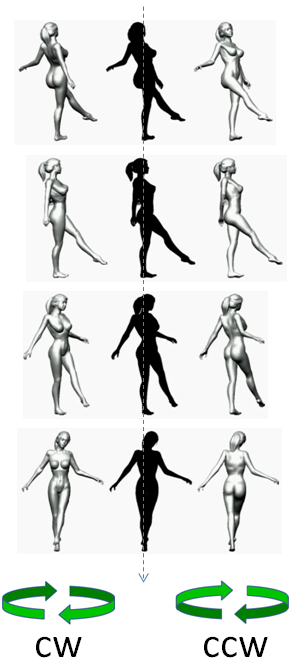In the Silhouette Illusion (video at the bottom), a silhouetted woman is seen spinning on one foot, her leg extended.
Scientists writing in Cognition have said that our ability to recognize and remember faces peaks at ages 30 to 34 - a decade later than most of our other mental abilities.
Some prior studies had suggested that face recognition might be slow to mature but fewer suspected that facial recognition might continue building for so many years into adulthood. The late-blooming nature of face recognition may simply be a case of practice making perfect.
If you were around in the early days of the iPhone, you may have thought users were in love with it. Proponents spoke of it in romantic terms and looked for reasons to discuss it, with questions like, "So what kind of phone do you have?"
It turns out they may have been and a similar effect occurs in people passionate about things like cars and guns - it looks like love, according to a new study in the Journal of Consumer Research. "Is it possible for consumers to be in love with their possessions?" ask authors John L. Lastovicka (Arizona State University) and Nancy J. Sirianni (Texas Christian University). When it comes to technology, cars, bicycles, and firearms, the answer seems to be a big yes.
A 30,000-year-old finger bone found in a cave in southern Siberia came from a young girl that was neither an early modern human nor Neanderthal, but instead belonged to a previously unknown group of human relatives who may have lived throughout much of Asia during the late Pleistocene epoch, according to new research (Reich, D. et al. Nature 468, 1053-1060 2010.
Game development company Fantastec has created an online 3D game called PolarHeroes for children aged 4 to 8.
Humans have greater susceptibility than other primates to certain infectious diseases which could be explained by species-specific changes in immune signaling pathways, a University of Chicago study finds.
The first genome-wide, functional comparison of genes regulated by the innate immune system in three primate species discovers potential mediators of differences in disease susceptibility among primates.
 Opioid Addicts Are Less Likely To Use Legal Opioids At The End Of Their Lives
Opioid Addicts Are Less Likely To Use Legal Opioids At The End Of Their Lives More Like Lizards: Claim That T. Rex Was As Smart As Monkeys Refuted
More Like Lizards: Claim That T. Rex Was As Smart As Monkeys Refuted Study: Caloric Restriction In Humans And Aging
Study: Caloric Restriction In Humans And Aging Science Podcast Or Perish?
Science Podcast Or Perish?









